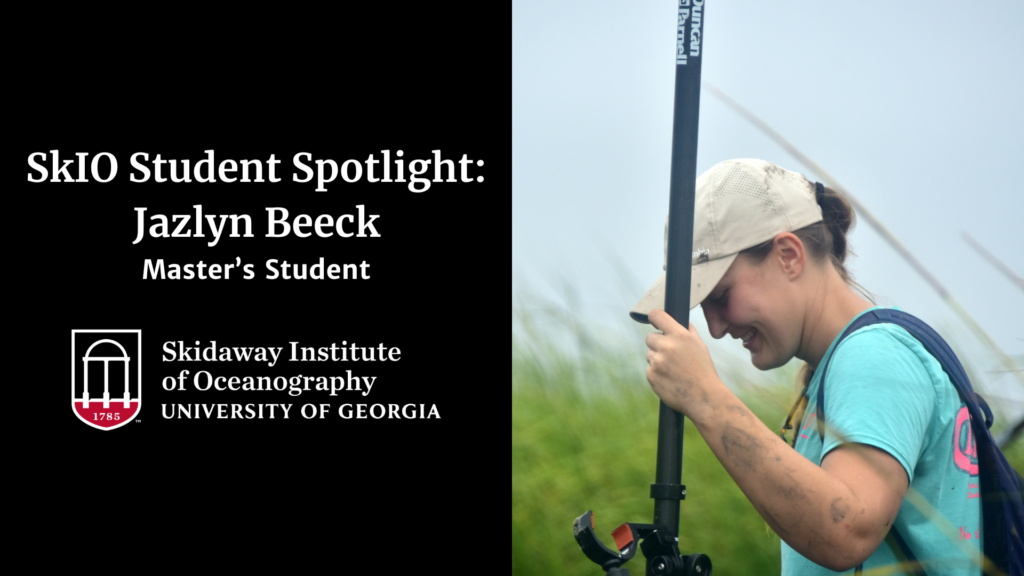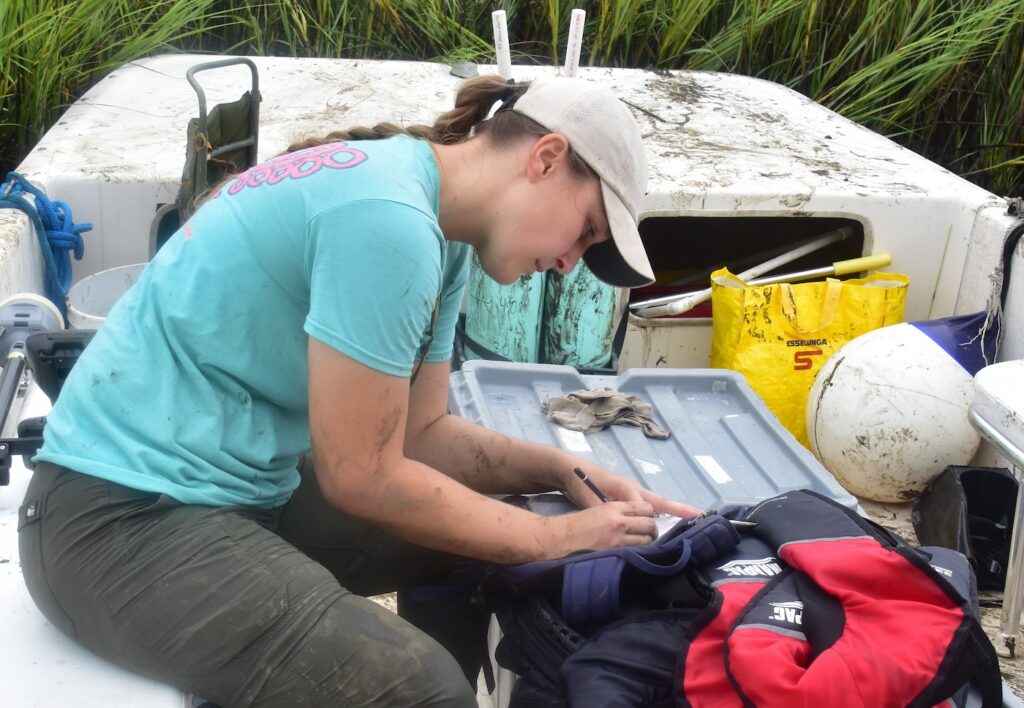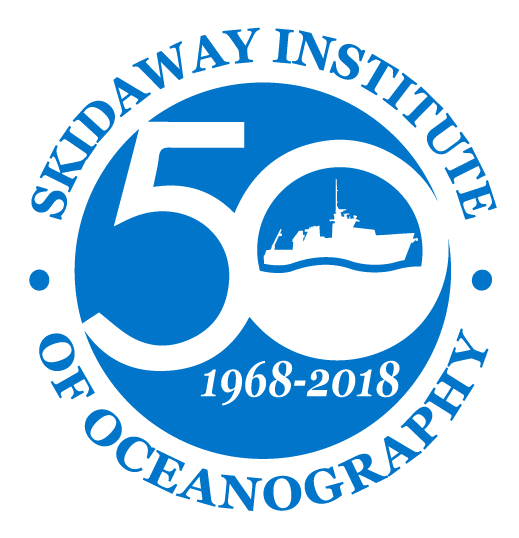
Jazlyn Beeck is a master’s student working in the lab of Clark Alexander, director of the UGA Skidaway Institute of Oceanography (SkIO). Originally from Schleswig, Iowa, where she grew up on a family farm, Beeck earned her bachelor’s degree in geology and environmental science from Iowa State University. At SkIO, she studies sediment dynamics and salt marsh accretion in Camden County, Georgia.
SkIO: What are you researching at SkIO, and who are you working with?
Jazlyn Beeck (JB): I’m working with Dr. Clark Alexander studying sediment dynamics and salt marsh accretion in Camden County, GA. I’m interested in sediment fluxes on different timescales in order to better understand the dynamics of sediment delivery to the marsh platform. I’m also interested in 100-year vertical accretion rates of the salt marshes and how well they’ve been keeping up with the relative rate of sea level rise. Salt marshes are vital ecosystems, and we want to learn about their future persistence!
SkIO: What inspired your love of oceanography and, more specifically, your track of study?
JB: I was very interested in working in estuarine systems due to their complexity and uniqueness. As a geology student, especially during field camp, you spend a lot of time looking at the rock records, specifically sedimentary deposits, and learning how to interpret what the depositional environment once was that had left us with what we see today (and the processes and forces that can shape and change it in between). So, I wanted the opportunity to work in a modern depositional environment and see first-hand the processes that shape and form what we also see in rock records.

SkIO: Why did you choose UGA/SkIO?
JB: My main reasons for choosing UGA/SkIO were because of the opportunities and location. Clark’s lab works on a variety of projects that I’m also lucky to get to learn about and help with, whether that be on marsh accretion, drone surveying, or sand sampling and grain size analyses. I also loved how the research was very applied and the lab’s trying to answer some big questions for local coastal managers. The location was also a big reason because being located on the coast, near and in the systems that you’re studying and working in, is a huge plus.
SkIO: Where do you see yourself in 5-10 years?
JB: In 5-10 years, I see myself working in the industry. I’m interested in both governmental (geologic survey) and the private sector as well!
SkIO: What do you do for fun, outside of your work/studies?
JB: I’ve really come to love saltwater fishing! I did a lot of fishing back home, but saltwater gamefish put up a fun fight while still putting some really good food on the table too. I also enjoy getting outside and disc golfing or relaxing at the beach on Tybee. I’m very into books, sports and pop culture!
SkIO: What advice would you give a high school or undergraduate student interested in a similar track? How can they get to where you are?
JB: My advice would be to follow your passions and don’t be afraid to reach out to graduate students or researchers and try to get your foot in the door. Being involved in something and physically doing or completing it will allow you to learn a lot about yourself and your likes and dislikes. I wouldn’t be in graduate school today if it wasn’t for my undergraduate research experience.

About SkIO
The UGA Skidaway Institute of Oceanography (SkIO) is a multidisciplinary research and education institution located on Skidaway Island near Savannah, Georgia. The Institute was founded in 1967 with a mission to conduct research in all fields of oceanography. In 2013, SkIO was merged with the University of Georgia. The campus serves as a gateway to coastal and marine environments for programs throughout the University System. The Institute’s primary goals are to further the understanding of marine and environmental processes, conduct leading-edge research on coastal and marine systems, and train tomorrow’s scientists. For more information, visit www.skio.uga.edu.


